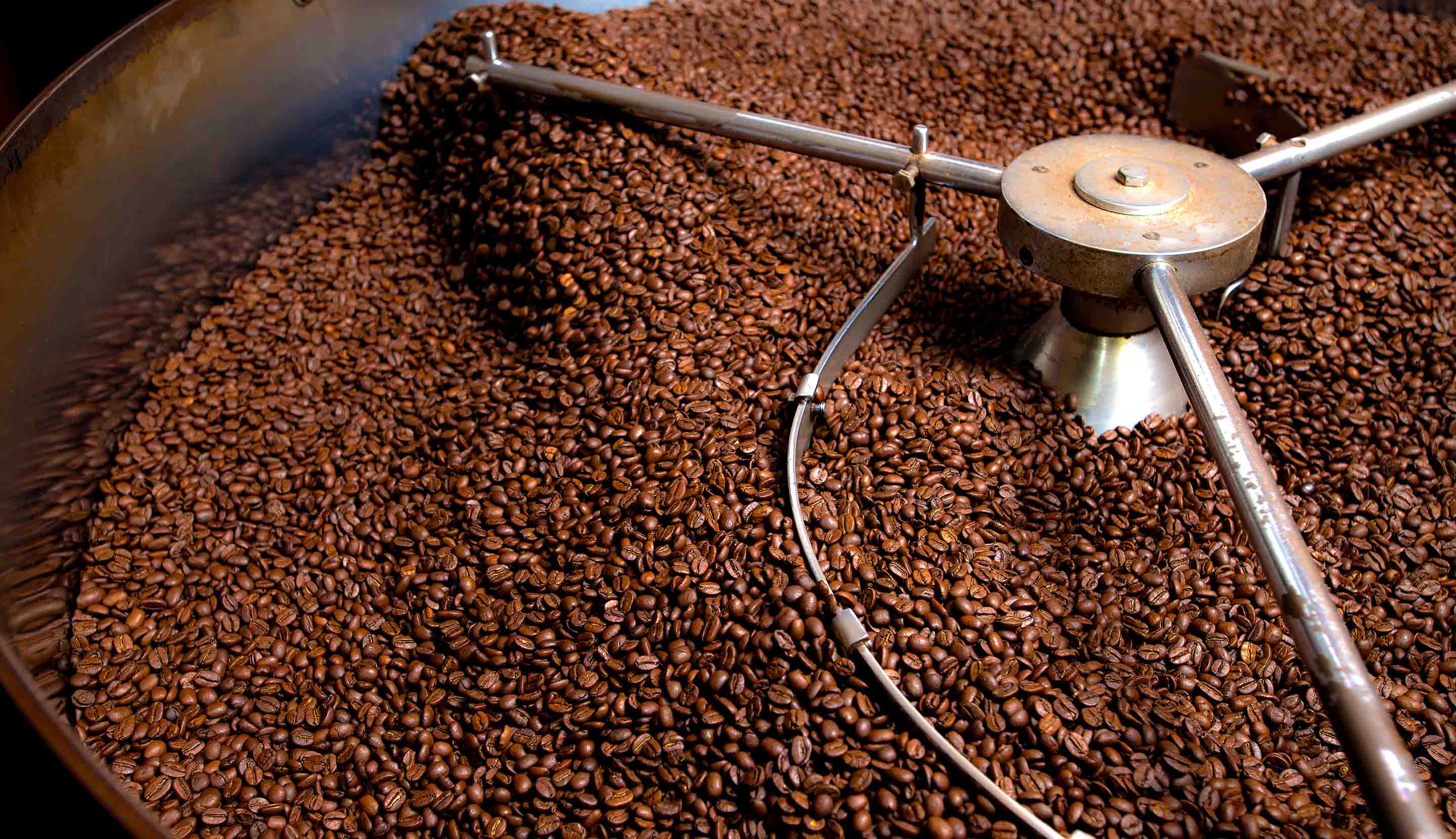The reason behind coffee roasting
It may surprise you, but coffee beans aren’t beans at all. Rather, they’re seeds which are found inside a coffee cherry. The coffee plant is a fruit tree and the fruits are similar in appearance to berries. After picking, the skin and pulp are removed and what is left are the seeds or coffee ‘beans’.
Prior to the roasting process these ‘beans’ are green and smell grassy, a far cry from the rich flavour you’ve come to associate with coffee.
The roasting process is where the magic happens and the clever little beans develop between 800 – 1000 different aroma compounds to transform into the coffee you know and love.
It’s during the coffee roasting process that different roast profiles and flavours are developed and as such, the temperature and time it takes has a huge impact on these flavours as well as on the colour of the beans.
How is NESCAFÉ® coffee roasted?
Across all roasting methods, the energy source for roasting coffee beans is hot air. There are currently three main coffee roasting processes used:
1. Drum Roaster Method
This is carried out by classic drum or centrifugal roasters which work by passing heat from the walls of the roaster to the beans by direct contact or conduction. Typically, the beans will be kept moving by a rotating drum to help ensure an even roast. Hot air will also be used with these roasters for a more balanced result; however, this process is known as roasting by convection.
2. Paddle Roaster Method
Hot air coffee roasting is done with a tangential roaster. This form of roasting is often favoured by roasters across the industry as it uses a mechanical paddle and hot air to keep the beans constantly moving. Keeping the beans moving helps to prevent burning as there’s less chance of the beans burning on the walls of the roasters. After, cooled water is usually added as the heat given off by the beans can cause them to continue roasting even after the process has ended.
3. Fluid Bed Roaster Method
Likened to the action you see in hot-air popcorn poppers, fluid bed roasting involves the beans rolling over in superheated air that passes upward fast enough for them to behave like a fluid. As all the beans are immersed in the stream of heat, the roast is typically very even, consistent and easy to reproduce. Another great aspect to this method is that unwanted by-products such as burnt chaff, undersized or broken beans get expelled by the hot air draft, allowing for a clean roast. Additionally, some fluid bed roasters feature forced air cooling outside the roast drum, providing the beans with almost instant cooling to prevent the beans cooking further.
The coffee roasting process
The entire coffee roasting process involves four carefully calculated steps which requires a master roaster to ensure each step is completed accurately and that the beans are heated evenly.
1. Drying stage
Coffee beans have a humidity of around 10% (give or take), which means they need to be dried prior to roasting. How long this takes will depend on the roaster in question, however the temperature of the beans at the end of this step should be around 160°C. There’s a very delicate balance here as it can’t be heated too quickly or too much as you risk burning the beans. It’s also during this stage that energy from the bean is collected as the third stage of the process is exothermic (heat producing).
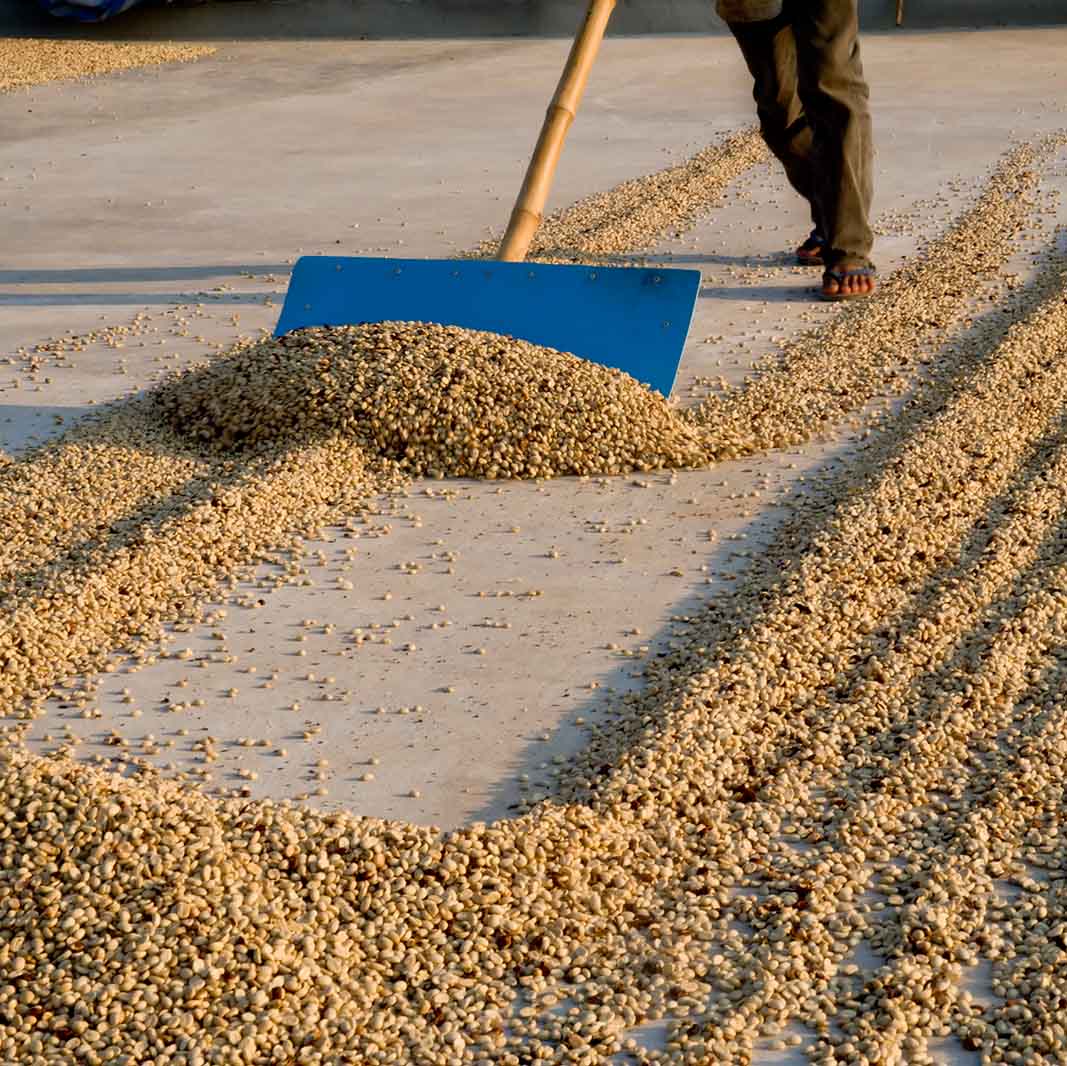
2. Browning stage
From here the coffee beans will begin to smell a bit like hay or toast, losing their original grassy aroma – this is a sign that the aroma precursors are changing to aroma compounds. It’s during the browning stage that an exciting process known as ‘the Maillard reaction’ happens. This is where the beans have absorbed enough heat which causes the amino acids and sugars to react with one another as the beans turn darker in colour, creating the unique and distinctive aroma profile for each bean.
At the end of the browning stage, you’ll encounter what’s known as ‘the first crack’, which is when coffee beans begin to approach edibility. It is when the coffee bean expands and the moisture begins to evaporate and as the moisture creates steam, it builds up pressure and causes the beans to crack open and this can be heard, a bit like when popcorn pops. Lighter roast coffees typically aren’t roasted beyond this point.
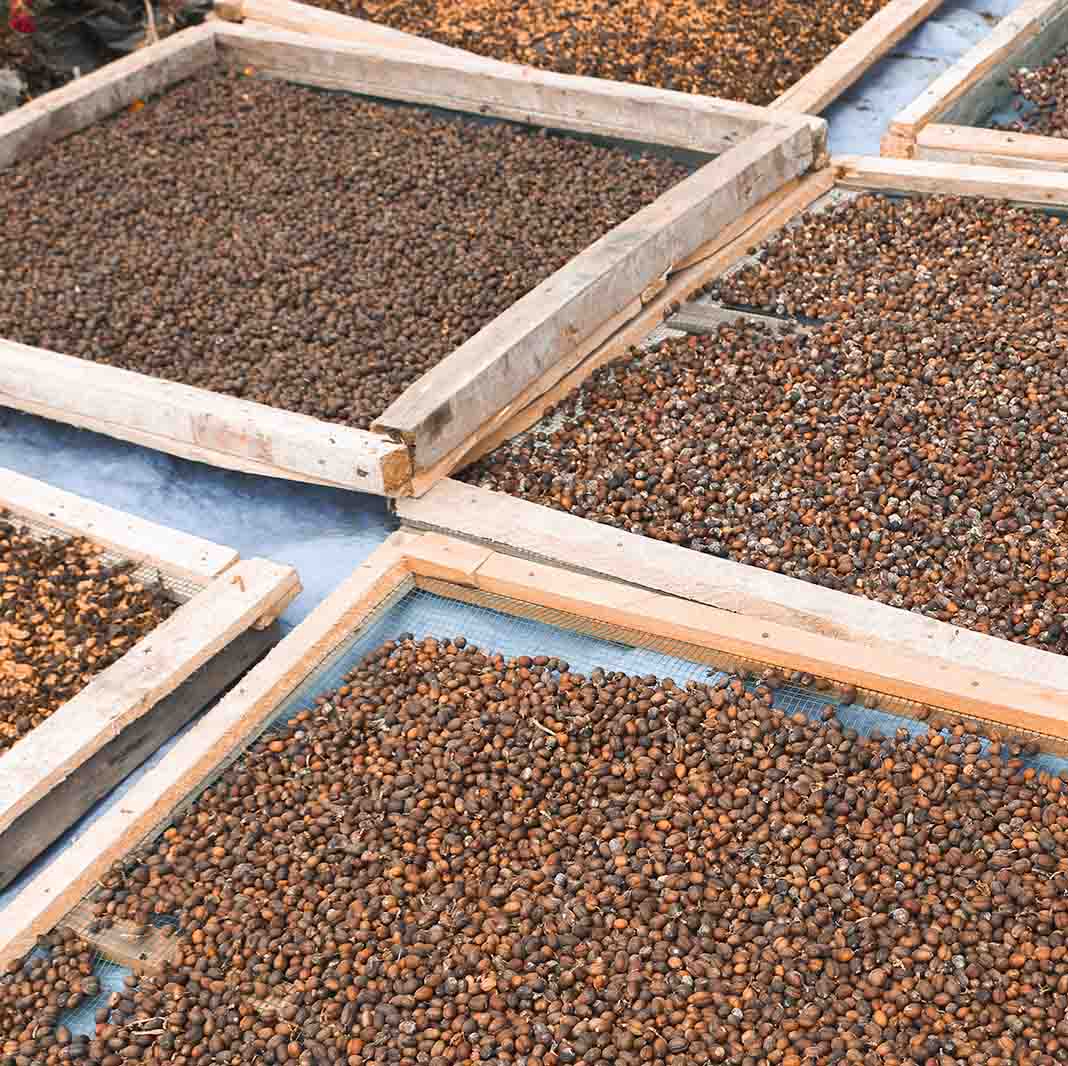
3. Development stage
The development stage sees an exothermic reaction occur and the coffee starts to crack due to the collected energy from the drying process. This is where the aroma compounds are developed and the total time it takes depends on the desired flavour profile or roast. If a dark roast is wanted, a second crack may occur, but the roast should not go too far past the second crack as the coffee beans start to bake and the result is a doughy tasting coffee.
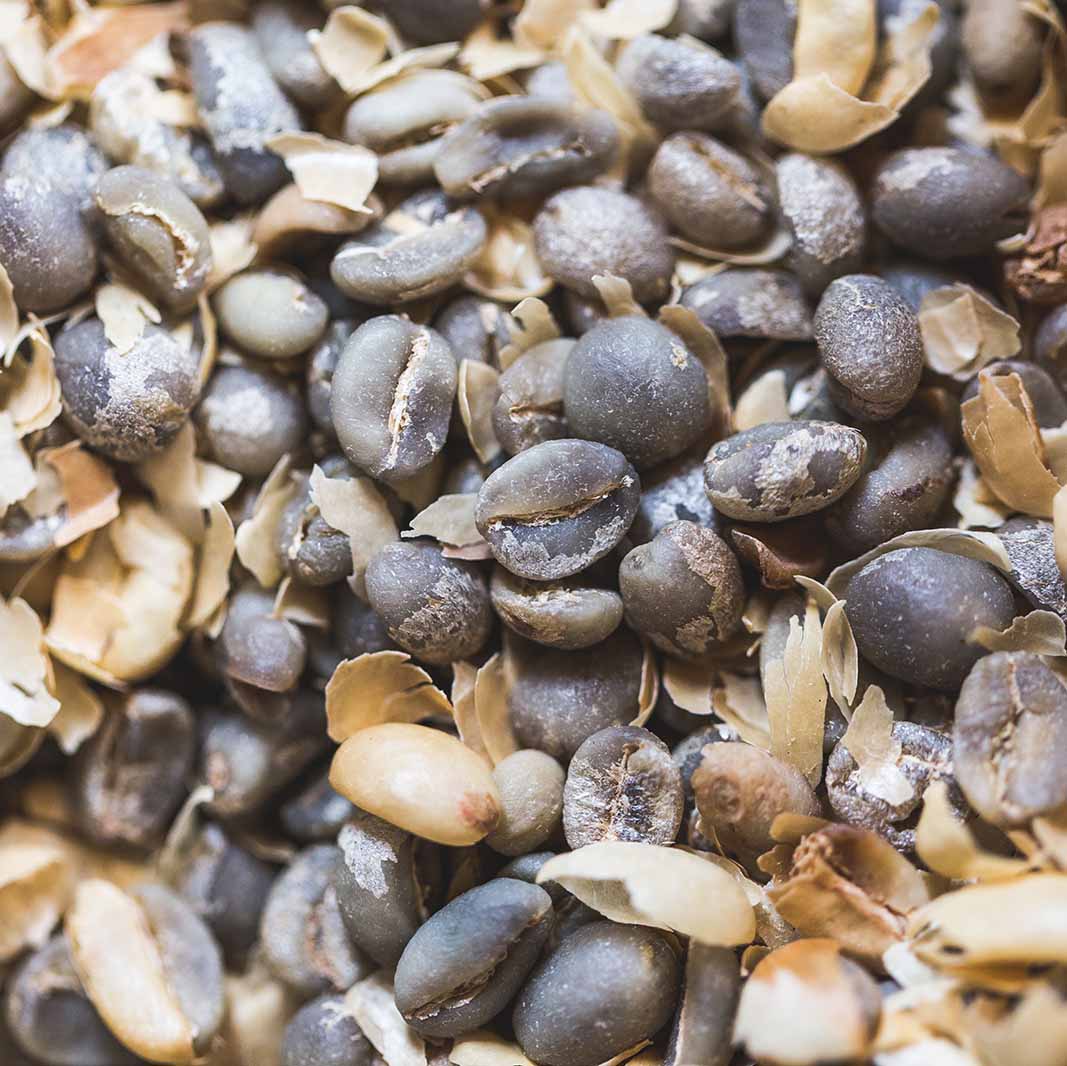
4. Cooling
Once the desired roast has been achieved, the coffee beans need to be transferred to a cooler tray so they can be cooled quickly. If they are not cooled quickly, the heat given off by the beans can cause them to continue to cook even after they’ve finished roasting, resulting in burnt and charred beans.
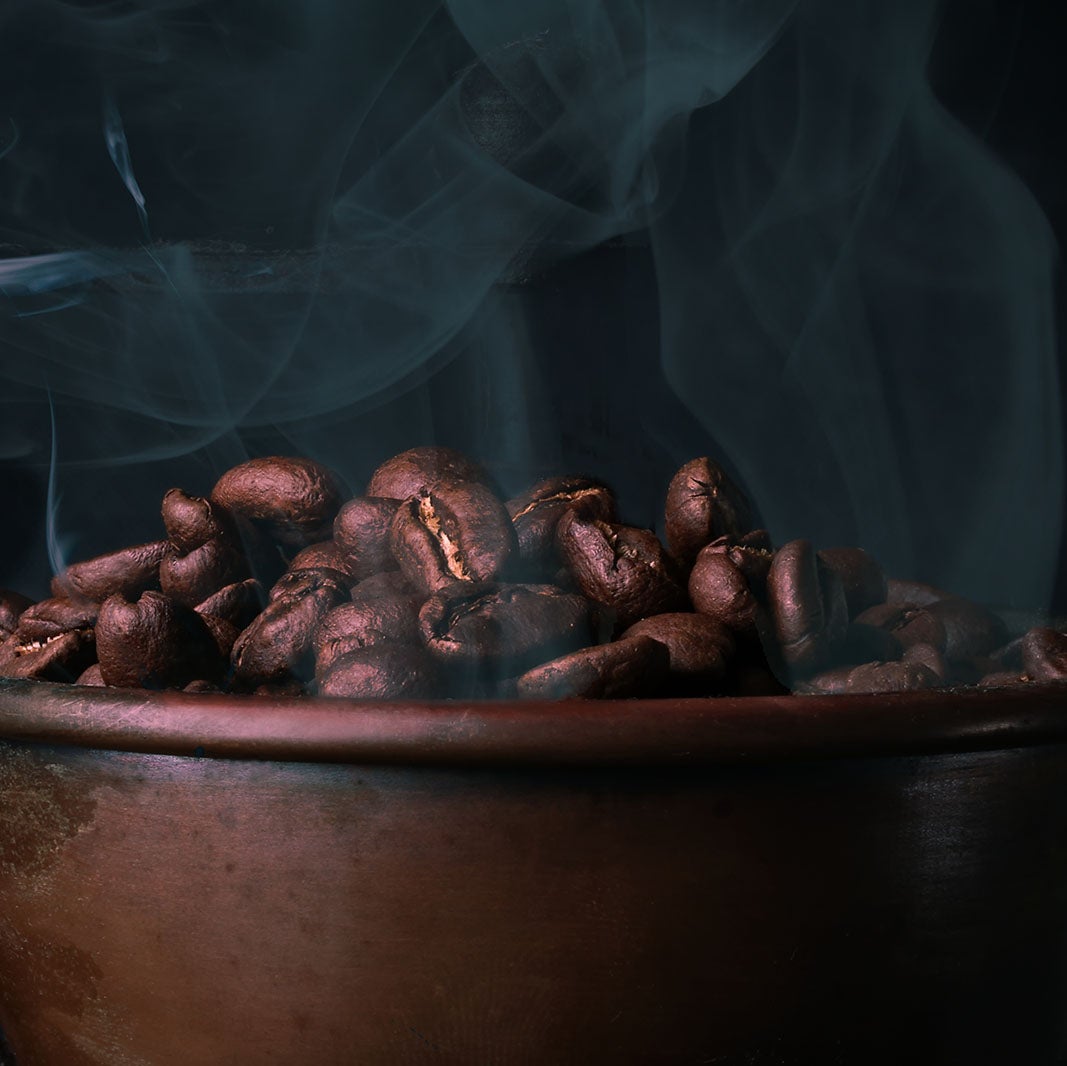
What is split roasted coffee?
Some of our instant coffees are made of two unique batches of specially roasted coffees. Each batch is individually roasted at a different temperature to bring out the very best flavours of both beans, and only then are they blended together to create one unique instant coffee. Our master roasters call this ‘split roasting’ and have a patent to protect the NESCAFÉ® expertise in this coffee roasting process.
We do ensure that whilst some beans will be of a lighter shade when roasted, then others will be much darker and each cluster of beans will experience the optimal roasting to ensure a full and well-balanced aroma in the final blend of roasted coffee beans.



Other articles you might be interested in

